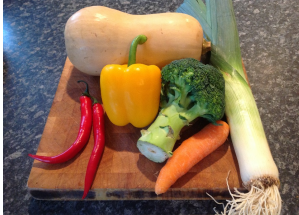Aust Diet Study
24th ATDS key findings – Phase 1 Key findings from this study Introduction • Phase 1 of the 24th ATDS investigated three chemicals: acrylamide, aluminium and perchlorates, in a range of foods and beverages.
24th ATDS key findings – Phase 1 Key findings from this study Introduction • Phase 1 of the 24th ATDS investigated three chemicals: acrylamide, aluminium and perchlorates, in a range of foods and beverages. Acrylamide • The levels of acrylamide found in the 24th ATDS were generally lower than, or comparable to, those reported in Australian and international studies. • Estimated dietary exposures were used to calculate Margin of Exposures (MOEs)1 using carcinogenic and neurotoxic endpoints. The MOEs indicate that the acrylamide exposure of Australian consumers is consistent with those considered to be of possible concern to human health by the 72nd meeting of the Joint Food and Agriculture Organisation (FAO)/World Health Organisation (WHO) Expert Committee on Food Additives (JECFA) (JECFA, 2011).
• It is important to maintain industry and consumer education measures to ensure acrylamide levels in Australian foods remain as low as reasonably achievable (ALARA) Aluminium • Aluminium was included in the 24th ATDS to supplement data collected during the 23rd ATDS and to provide an updated dietary exposure estimate. • Estimated dietary exposures were under the Provisional Tolerable Weekly Intake (PTWI)2 for all population groups assessed except for 2–5 year old 90th percentile consumers who had an estimated exposure of 110% of the PTWI. Due to the conservative nature of the current PTWI, this small exceedance is unlikely to represent a major public health and safety issue. • Dietary exposure estimates were higher than those reported in the 23rd ATDS because more processed foods were included. The 24th ATDS included foods likely to have additives containing aluminium, with relatively high levels of aluminium being found in some foods such as cakes, compared to other foods surveyed.









